Abstract
Information about occurrence of testicular cancer (TC) in relatives of TC patients has been collected using questionnaires from 797 out of 922 consecutive Norwegian and 178 out of 237 Swedish patients with TC seen at the Norwegian Radium Hospital and the University Hospital Lund in Sweden during 1981-91. Fifty-one Norwegian and five Swedish patients had a relative with confirmed TC. Thus, 51/922 (5.5%) of the Norwegian and 5/237 (2.1%) of the Swedish patients treated during the time interval investigated were considered to have familial TC. Thirty-two of the patients had an affected first-degree relative. Expected numbers of cancers in the relatives were computed from data in the Norwegian and Swedish Cancer Registries. Standardised incidence ratios (SIRs) were taken as observed numbers of TC/expected numbers of TC in the relatives. The SIR for brothers was 10.2 (95% confidence interval 6.22-15.77). SIR for fathers was 4.3 (1.6-9.3) and for sons 5.7 (0.7-23.2). The point estimate for the risk to brothers in the Norwegian part of the sample to develop TC by the age of 60 was 4.1% (95% CI 1.7-6.6%). This study indicates that genetic factors may be of greater importance in TC than previously assumed. Patients with familial testicular cancer had bilateral tumours more often than sporadic cases (9.8% bilaterality in familial vs 2.8% in sporadic cases, P=0.02). For patients with seminoma age of onset was lower in familial than in sporadic cases (32.9 vs 37.6 years, P=0.06). In father-son pairs, there was a statistically significant earlier age of diagnosis in the generation of sons (28.8 years vs 44.9 years, P=0.04). The prevalence of undescended testis (UDT) did not seem to be higher in familial than in sporadic TC (8.2% in familial TC and 13.3% in sporadic cases). This may indicate that different factors are of importance for the development of familial TC and UDT.
Full text
PDF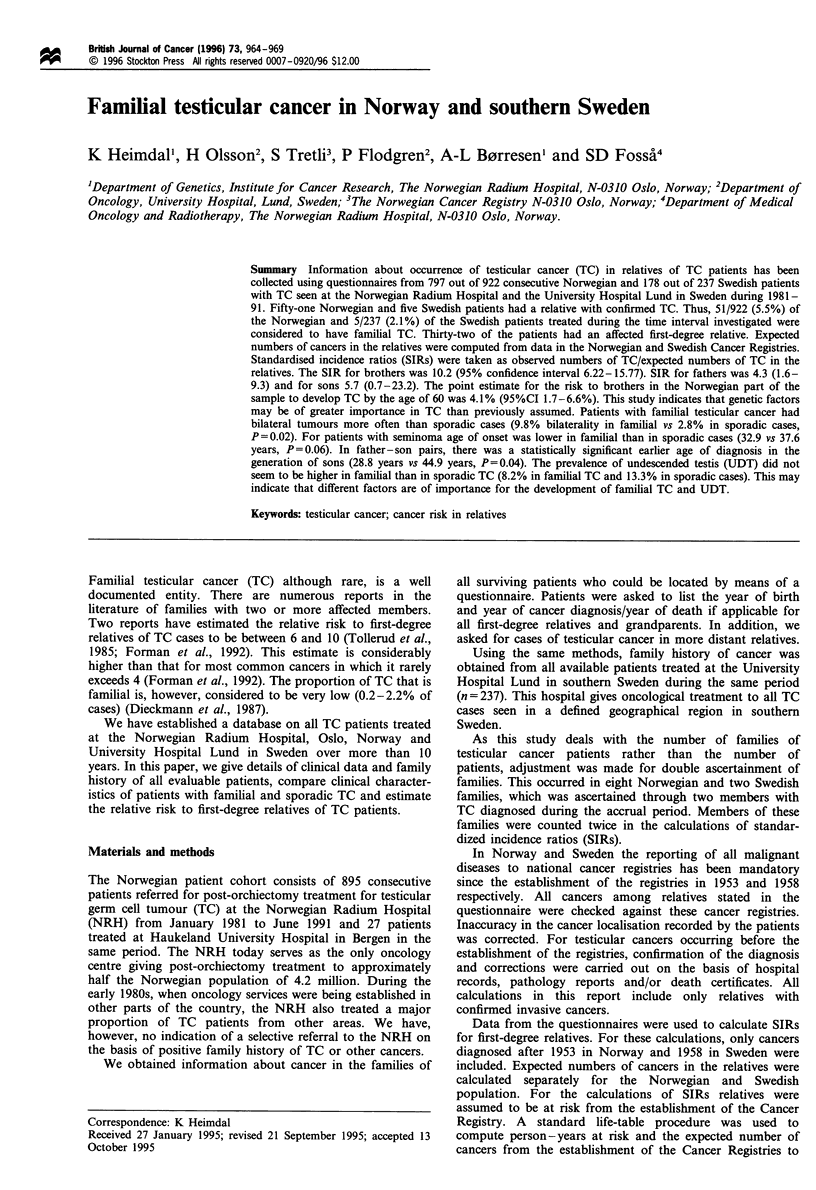
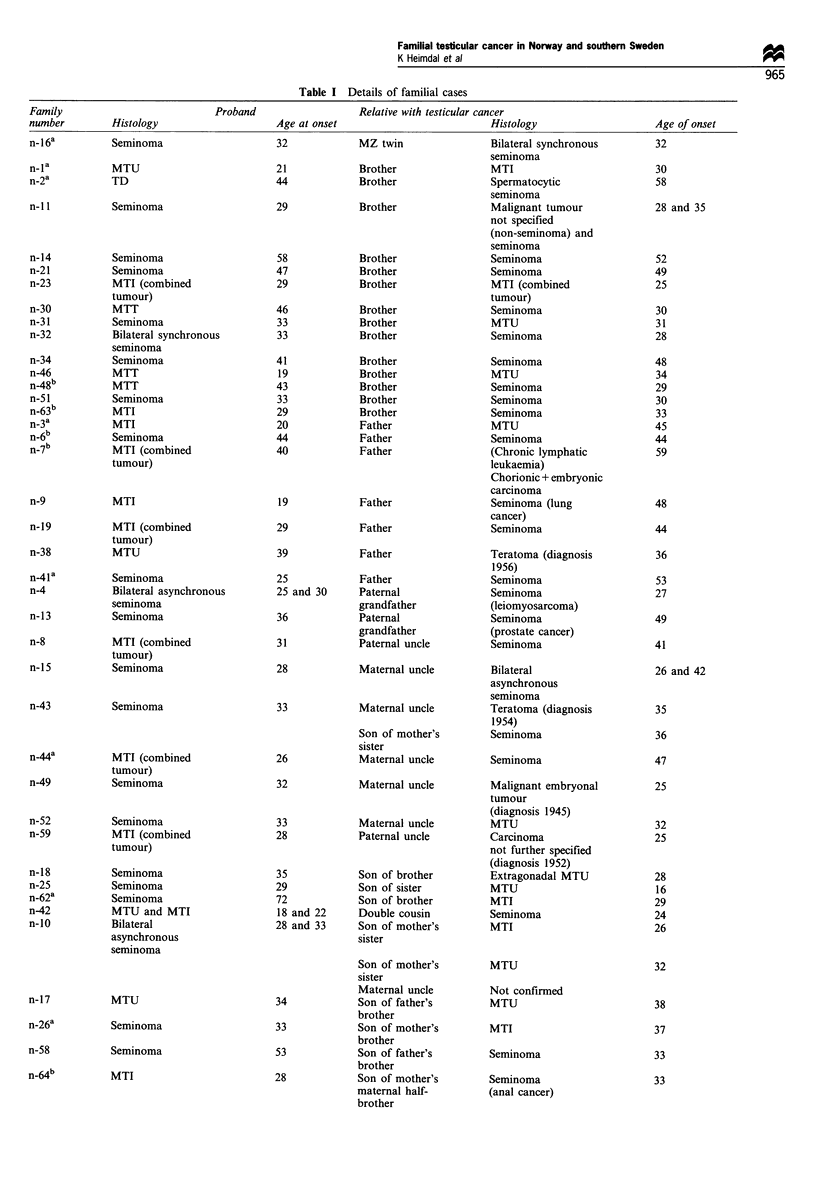
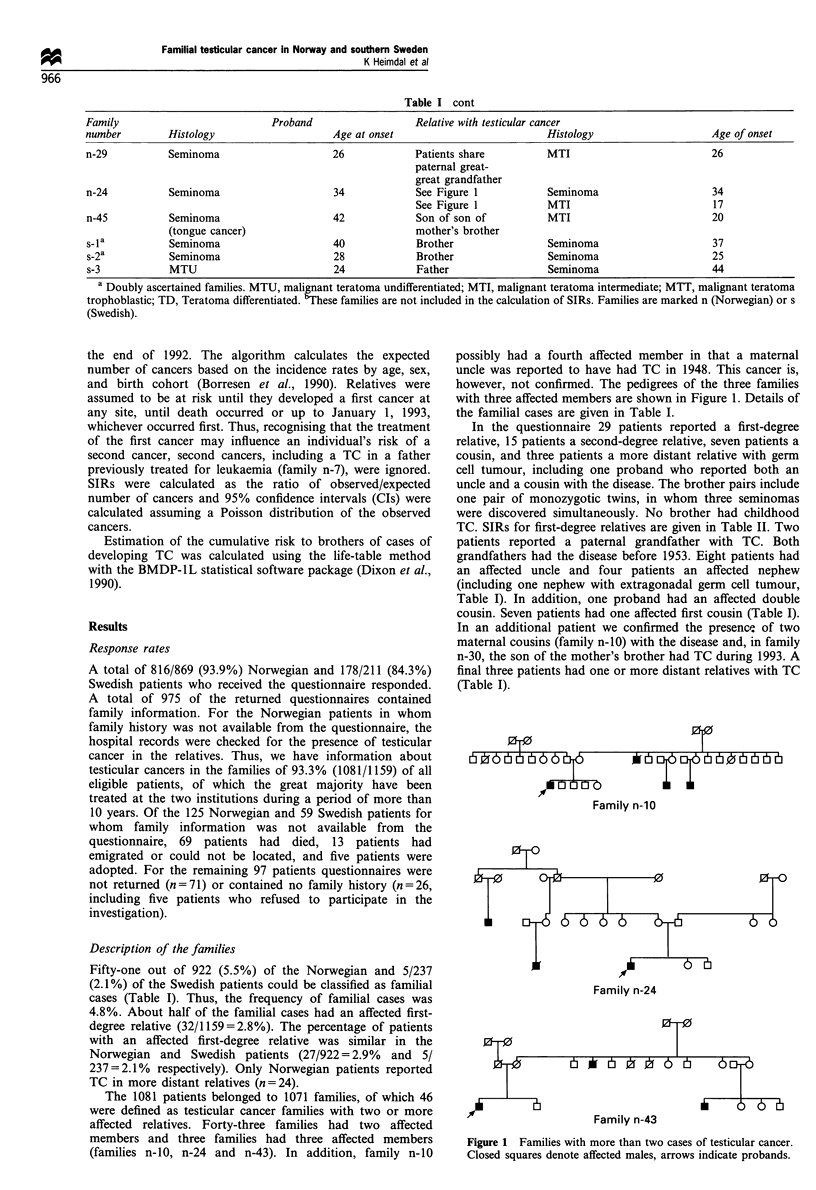
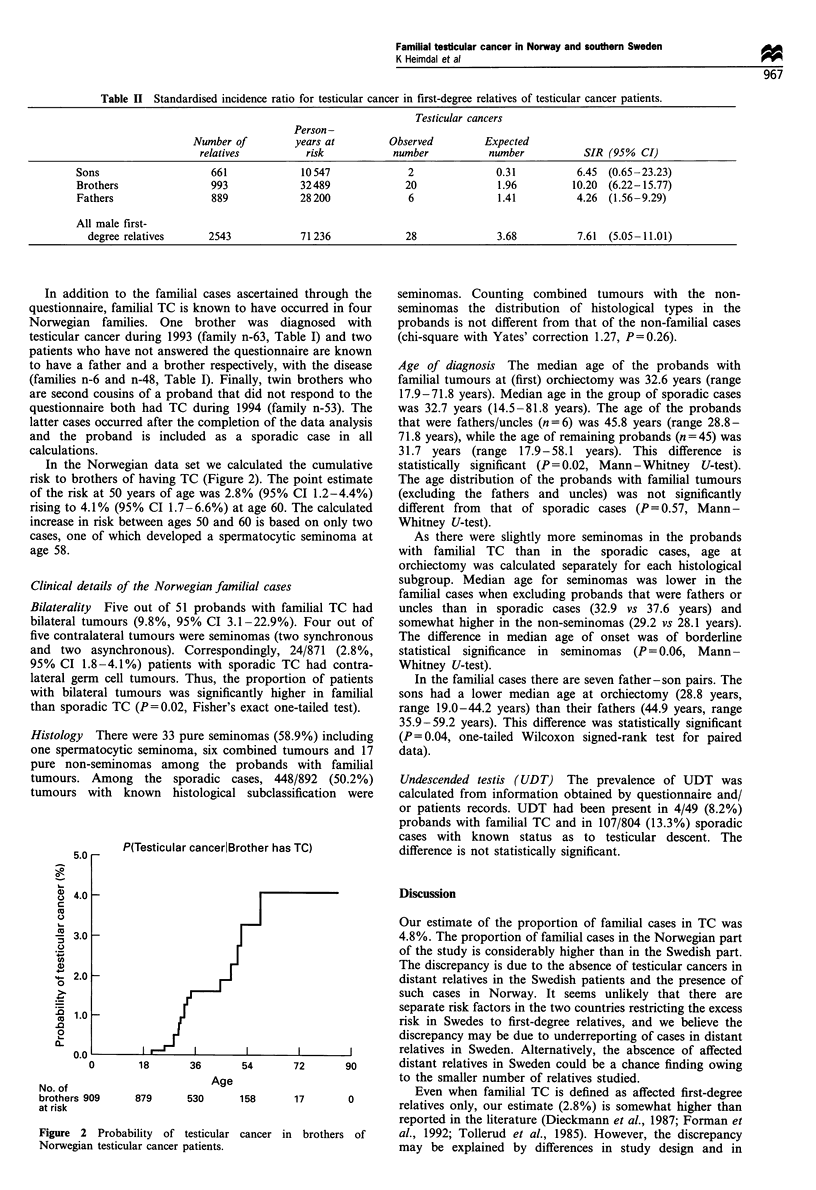
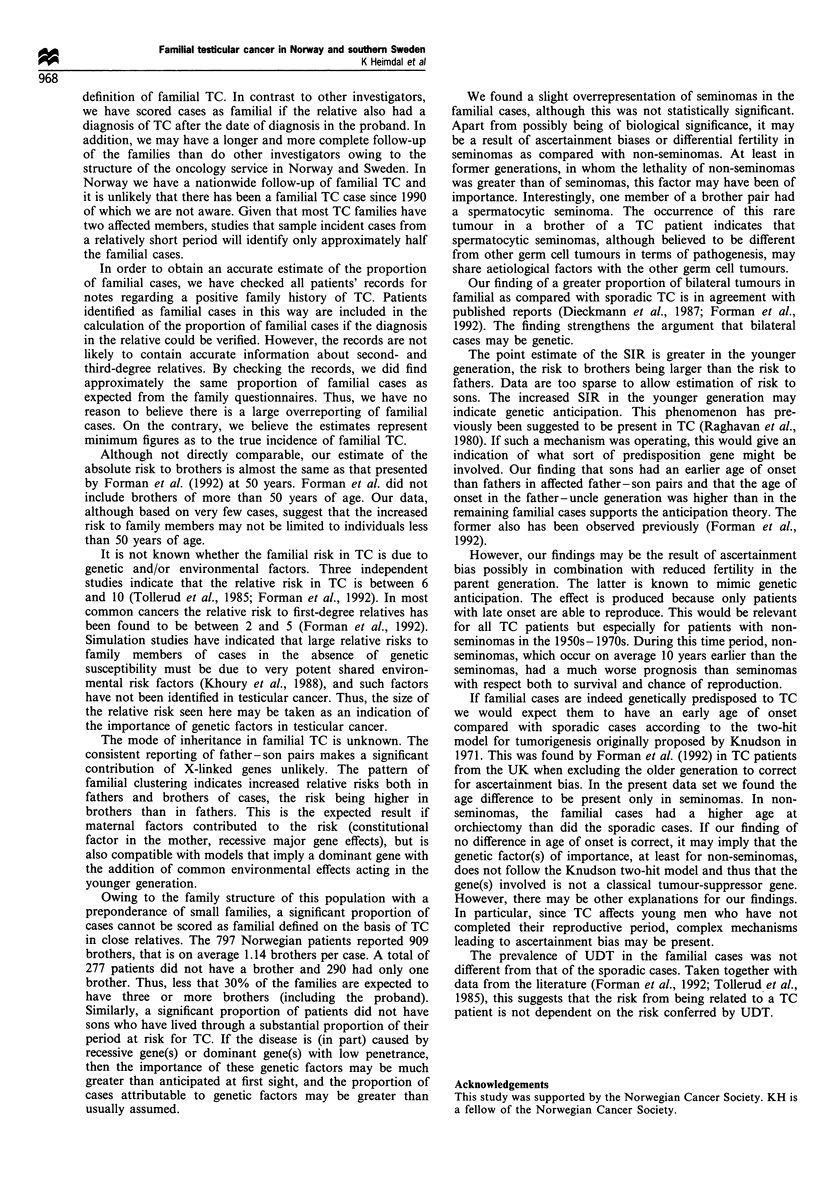

Selected References
These references are in PubMed. This may not be the complete list of references from this article.
- Børresen A. L., Andersen T. I., Tretli S., Heiberg A., Møller P. Breast cancer and other cancers in Norwegian families with ataxia-telangiectasia. Genes Chromosomes Cancer. 1990 Nov;2(4):339–340. doi: 10.1002/gcc.2870020412. [DOI] [PubMed] [Google Scholar]
- Dieckmann K. P., Becker T., Jonas D., Bauer H. W. Inheritance and testicular cancer. Arguments based on a report of 3 cases and a review of the literature. Oncology. 1987;44(6):367–377. doi: 10.1159/000226513. [DOI] [PubMed] [Google Scholar]
- Forman D., Oliver R. T., Brett A. R., Marsh S. G., Moses J. H., Bodmer J. G., Chilvers C. E., Pike M. C. Familial testicular cancer: a report of the UK family register, estimation of risk and an HLA class 1 sib-pair analysis. Br J Cancer. 1992 Feb;65(2):255–262. doi: 10.1038/bjc.1992.51. [DOI] [PMC free article] [PubMed] [Google Scholar]
- Khoury M. J., Beaty T. H., Liang K. Y. Can familial aggregation of disease be explained by familial aggregation of environmental risk factors? Am J Epidemiol. 1988 Mar;127(3):674–683. doi: 10.1093/oxfordjournals.aje.a114842. [DOI] [PubMed] [Google Scholar]
- Knudson A. G., Jr Mutation and cancer: statistical study of retinoblastoma. Proc Natl Acad Sci U S A. 1971 Apr;68(4):820–823. doi: 10.1073/pnas.68.4.820. [DOI] [PMC free article] [PubMed] [Google Scholar]
- Raghavan D., Jelihovsky T., Fox R. M. Father-son testicular malignancy. Does genetic anticipation occur? Cancer. 1980 Mar 1;45(5):1005–1009. doi: 10.1002/1097-0142(19800301)45:5<1005::aid-cncr2820450529>3.0.co;2-0. [DOI] [PubMed] [Google Scholar]
- Tollerud D. J., Blattner W. A., Fraser M. C., Brown L. M., Pottern L., Shapiro E., Kirkemo A., Shawker T. H., Javadpour N., O'Connell K. Familial testicular cancer and urogenital developmental anomalies. Cancer. 1985 Apr 15;55(8):1849–1854. doi: 10.1002/1097-0142(19850415)55:8<1849::aid-cncr2820550834>3.0.co;2-1. [DOI] [PubMed] [Google Scholar]


